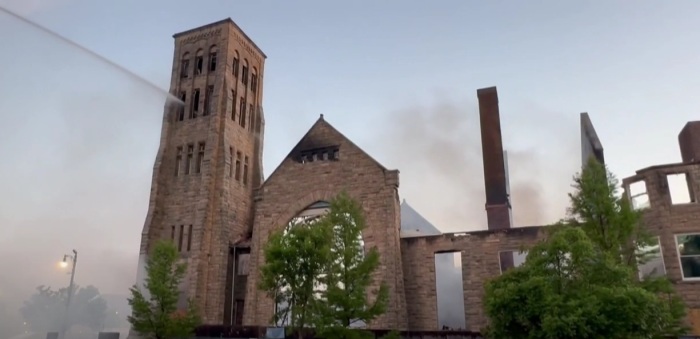
A fire set at a historic African American church in Tennessee that had ties to the 1960s Civil Rights Movement was intentionally set, according to local authorities.
The Memphis Fire Department (MFD) issued a statement on Wednesday regarding its investigation into a fire that occurred last month at the Clayborn Temple Church, a closed church that was undergoing an extensive renovation project.
“Investigators have determined the fire was intentionally set on the interior of the historic church. A person of interest is being sought by Investigators for their possible involvement in this fire,” stated MFD.
“The Memphis Fire Department will continue conducting this investigation to apprehend who is responsible for setting the fire at this historic church.”
The MFD added that it was relinquishing control of the site back to the group Historic Clayborn, and expressed gratitude for the work of local and federal investigators on the case.
Established in 1892 as Second Presbyterian Church, Clayborn Temple was involved in Civil Rights activism during the 1960s. This included being a gathering place for striking Memphis sanitation workers in 1968.
The strikers’ famous “I AM A MAN” signs were printed in the basement and the property features a display of that phrase in large letters. The church itself closed in 1999.
Last month, a fire struck the church, which was in the process of undergoing a $6 million renovation project, heavily damaging the shuttered sanctuary.
Soon after the fire, it was announced that the Bureau of Alcohol, Tobacco, Firearms and Explosives had joined the investigation, with a spokesperson telling The Christian Post at the time that it was “the only federal agency responsible for enforcing federal arson statutes” and “maintains a cadre of experts in the fire investigation field.”
“ATF routinely investigates place of worship fires to determine if there has been a violation of the Church Arson Prevention Act of 1996,” the spokesperson told CP.
“The statute prohibits intentionally defacing, damaging or destroying religious property (or attempting to do so) because of the race, color, or ethnic characteristics of any individual associated with such property.”
Anasa Troutman, founder and executive director of the group Historic Clayborn, said in a statement emailed to CP last month that the fire was “a devastating loss” for the community.
“For decades, Clayborn and the iconic ‘I AM A MAN’ signs born in its basement have stood as an international beacon of resilience, faith and the work to build beloved communities. It is a living testament of our past sacrifices and our future hope,” Troutman said.
“Clayborn’s true spirit was never in the walls alone. It lives in us. Even as we mourn, we must remember: resilience is our birthright, but so is the space to grieve. Our ancestors endured, grieved, rebuilt and transcended unimaginable losses. We will do the same.”
Troutman said that she and her organization are “still committed to her restoration” and that the “spirit of Clayborn is stronger than any fire.”


















